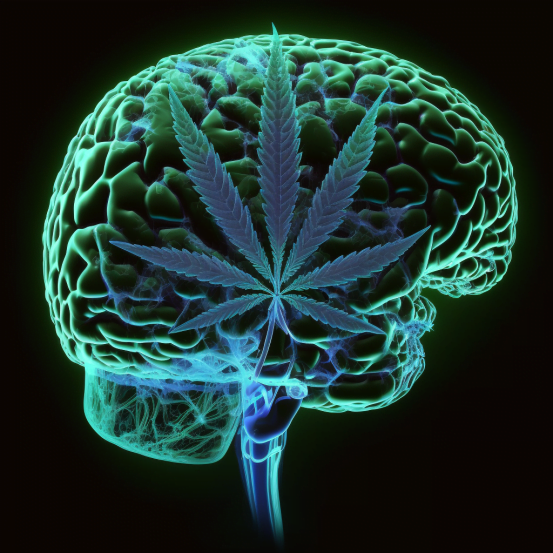English
Cannabis prevents stroke and kidney disease but impairs some sensory perceptions
Good news for patients and activists fighting for medical marijuana. At 66th Annual Meeting of the American Academy of Neurology, more evidence was presented that cannabis prevents stroke and kidney disease.
Cannabis can reduce the risk of stroke
The evidence was presented at the 66th Annual Meeting of the American Academy of Neurology. Using data collected over a 16-year period, researchers from the University of Maryland found that cannabis users suffered statistically fewer strokes, but researchers were still hesitant to call marijuana’s effects protective. “We’re going to take another look at our data and do some additional analysis to see if we can look for possible confounders,” said the study’s lead researcher. Despite their reluctance to accept the implications of these findings, it is safe to say that the public presentation of this evidence can only be good for the reputation of medical marijuana.
Cannabinoid deficiency linked to kidney disease
Several studies have already demonstrated the importance of the recently discovered endocannabinoid system. We know that we have a network of natural cannabis-like compounds that bind to the same receptors as cannabinoids such as THC and CBD, leading to a variety of therapeutic effects. Research now shows that cannabinoid therapy could be promising for cannabinoid-deficient kidneys suffering from a condition known as diabetic nephropathy. By activating these receptors with tolerated cannabinoids such as CBD, it may be possible to slow the progression of the disease.
Endocanabinoid system (ECS) and the kidneys
The ECS consists of fat-based neurotransmitters that are affected by the cannabinoids found in the cannabis plant – such as Δ9-tetrahydrocannabinol (THC) and cannabidiol (CBD) – when they come into contact with the two different types of cannabinoid receptors (CB1 and CB2). These receptors are found in numerous tissues throughout the body, including the kidneys.
The ECS assists the body in various processes, including maintaining proper body temperature, pain perception and controlling inflammation in our bodies. When these receptors are activated, they increase or decrease our natural endocannabinoid levels.
Endocannabinoids, such as anandamide (AEA) and 2-arachidonoylglycerol (2-AG), are fat-based neurotransmitters responsible for a variety of processes in our bodies. These processes include regulating sleep and pain perception, as well as modulating our immune system to slow down inflammation.
The role of ECS in renal pathology – which deals with the diagnosis and characterisation of medical diseases of the kidneys – is an emerging area of research. It has so far been studied mainly in the context of CB receptors. Under normal conditions, CB1 receptors are involved in the regulation of renal blood flow, salt and water excretion and absorption, and protein excretion in the urine.
Alterations in CB receptor expression and activity have been found in various kidney diseases, particularly CKD and different types of kidney damage such as diabetic nephropathy and acute kidney injury (AKI). Current research suggests that targeting the ECS may be of diagnostic and therapeutic value.
A review of recent findings on CB receptors in the kidney states,
“Studies using isolated cells, rodent models and human studies have shown that the endocannabinoid system plays a crucial role in renal function and disease. Therefore, therapeutics that modulate CB2 and CB1 receptor activity in renal disease may become clinically relevant“.
Some experimental studies suggest that cannabinoids such as d-9-THC and endocannabinoids such as AEA can activate these CB receptors and have either positive or negative effects on renal function depending on a variety of factors.
Currently, there is a lack of human studies examining both the effects of cannabis use on healthy kidneys and on kidney function in patients with kidney disease. More research is needed in this area to limit the harmful effects of these substances while promoting their potentially beneficial effects on kidney function in different types of kidney disease.
Which symptoms and side effects of dialysis / CKD can cannabinoids help with?
There are several side effects of CKD and dialysis that can be alleviated with medical cannabis. Although more research is needed in many cases, there are some conditions for which there is already extensive research showing that medical marijuana can be a viable and effective treatment for side effects such as nausea and vomiting, loss of appetite, itching, inflammation and chronic pain.
THC can impair the sense of smell
On a list of important cannabis-related discoveries, the subtle effects of marijuana on our sense of smell would probably rank pretty low. Still, recreational users might be curious about how THC alters our sensory experiences, especially if we find that certain perceptions are amplified. However, according to a small German study, our sense of smell and olfactory discrimination may be noticeably impaired. Curiously, THC has also been found to stimulate the olfactory bulbs in animal models, so there is clearly more work to be done to understand THC and its influence on sensory perception.
If you were intrigued by the article about cannabis prevents stroke and kidney disease
Published by Sakul
01/02/2023choose and buy cannabis seeds from our offer
our pleasure




























thanks to the author Sakul perfect article about cannabis and diseases